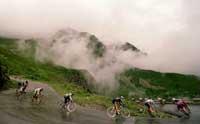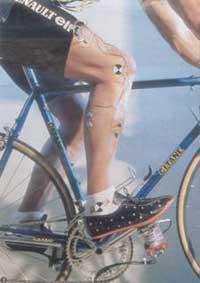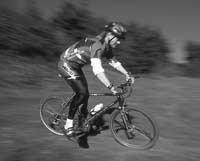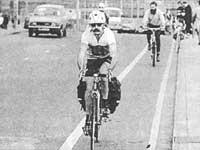More fair races?
2001/09/13 Kortabarria Olabarria, Beñardo - Elhuyar Zientzia
passes the finish line first wins the races, no doubt. However, for scientists Graeme Ackland and David Butler of the University of Edinburgh, race results are often not correct. Therefore, they have developed a computer model that can make cycling, orientation and triathlon tests more direct.
Both researchers claim that racing in groups can win or lose in the final sprint. For example, cyclists go in wind-resistant sets, alternating at the front and protecting each other. But going in a group hides the possible imbalance of forces between cyclists. The computer model developed by Ackland and Butler analyzes the causes of the formation of sets in races, such as the length of the race, the ability of cyclists or their initial location.

According to the work done, the main factor of formation of the sets is the number of cyclists able to catch the wheel of the cyclist that goes in the head of the platoon. They say that if more than 13% of cyclists are able to do so, the snowball effect occurs and groups of cyclists are formed. The model takes into account the advantage of cyclists able to go behind the first cyclist.
The computer model can also be used in orientation races, as it is also possible to follow the other contestants without reviewing the map. With this model an adequate initial margin of competition to competition can be established. He also stated that the model is useful for triathlon races, "since we know how the sets are formed once the bike is caught and we can decide the appropriate spaces between competitors to start the previous swimming test." The adequacy of the output ranges would not be a wrong decision, since, according to experts, when going under another, can store about 25% of the energy itself.

Gai honi buruzko eduki gehiago
Elhuyarrek garatutako teknologia






